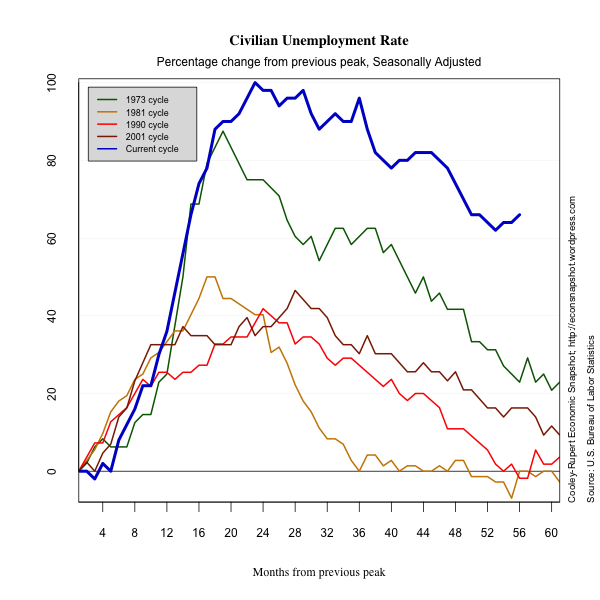Nonfarm payroll employment increased by 163,000 (the median forecast was around 100,000) in July after increasing a revised 64,000 in June and 87,000 in May. The unemployment rate edged up from 8.2% to 8.3%. This increase was in spite of a decrease in labor force participation which decreased from 63.8% to 63.7% and reflected another downward tick in the employment population ratio. Participation is now at historically low levels.
In our last snapshot of the labor market, we used the Atlanta Fed’s Jobs Calculator to evaluate some likely scenarios of the state of the labor market come the November elections. The job’s calculator in essence does some back of the envelope calculations on what the monthly jobs number needs to average to reach a certain unemployment rate at a specified point in the future.
After this morning’s July release, there will be only 3 additional months of data until people enter the voting booths in November. Employment gains are typically slightly higher in September and October than in the summer months, so if we are optimistic that employment will continue to increase by the same amount as it did in July, that would indicate that, by November, the unemployment rate will drop to around 7.92%. Sounds optimistic? It probably is.
This assumes that the labor force participation rate will remain historically low (at 63.7%). Since the peak of the business cycle in 2007 Q4, labor force participation has decreased by 2.3 percentage points (66% to 63.7%). That decrease is partly to attributed to long term demographic changes like the aging of the baby boomers. But a part of that decrease is certainly attributable to cyclical factors. A large number of discouraged workers (those who would like to work, but have given up searching) still remain in the pool of people out of the labor force. The decisions of these workers to begin searching for a job and enter the labor force is an important determinant of the unemployment rate. Here are some other scenarios for November with different levels of the participation rate (assuming monthly job gains will be around 170,000).
- If the labor force participation stays at 63.7%, the unemployment rate in November will be around 7.9%.
- If the labor force participation increases to 63.9%, the unemployment rate in November will be around 8.2%.
- If the labor force participation increases to 64%, the unemployment rate in November will be around 8.35%.
- If the labor force participation increases to 64.1%, the unemployment rate in November will be around 8.48%.
As you can see small swings in the participation rate have large consequences for the unemployment rate in November.







